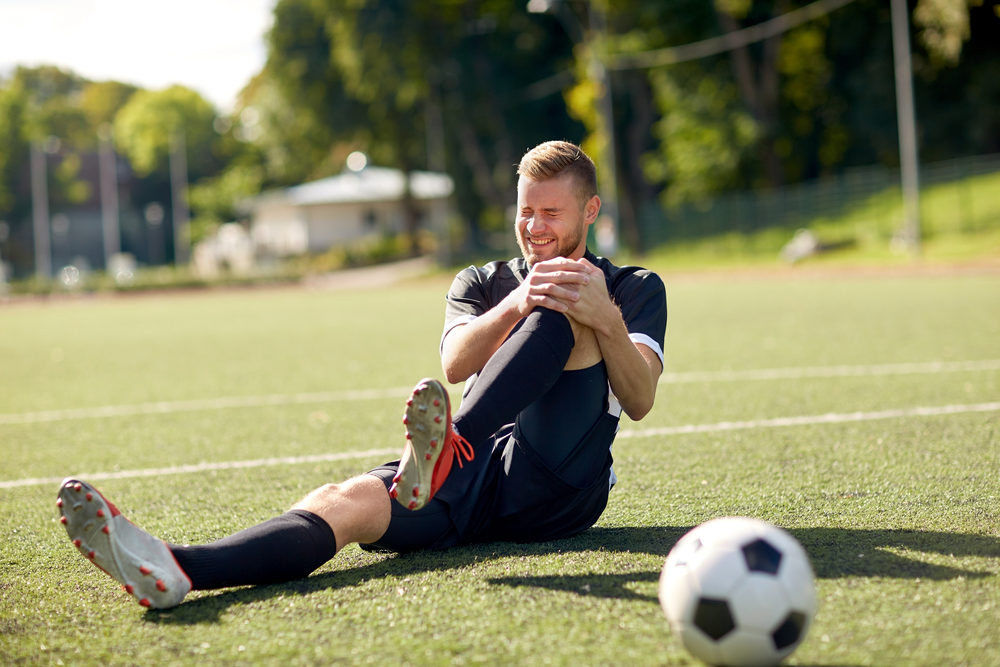ACL tears are common among athletes, but anyone can be affected by this debilitating knee injury.
The anterior cruciate ligament (ACL) is a rope of tissue that connects the thigh bone (femur) to the shin bone (tibia) and serves to stabilize the knee joint. The ACL is incredibly strong, but also susceptible to breakage — especially during sports that require jumping, pivoting, or sudden stops. These actions, if executed incorrectly, can cause the ligament to tear.
Though more common among athletes like skiers, basketball players, and soccer players, non-athletes may rupture their ACL simply by twisting their knee. If you suspect you’ve injured your ACL, you’ll know it by these five tell-tale symptoms.
ACL TEAR SYMPTOMS
The following symptoms may indicate serious ACL trauma that requires immediate medical attention. If you notice any of these signs, visit an orthopedic specialist for an accurate diagnosis. Your doctor will do a series of tests including an X-ray (to rule out a bone fracture) and an MRI (to get a clear picture of the ligament damage).
A Loud “Pop”
At the time of the ACL injury, most people hear a “popping” sound in their knee. Sometimes, the sound is so loud bystanders can hear it as well.
An Unstable Knee
An ACL injury often renders the knee weak and unstable. Sufferers may avoid putting any weight on the joint, fearing that if they do, the knee will buckle.
Rapid Swelling
A torn ACL causes blood to flood the vessels crisscrossing the ligament, resulting in a swollen, distorted joint. The knee may also feel warm to the touch and turn red. Swelling that doesn’t subside within two days typically signifies an ACL tear.
Pain
Pain associated with an ACL rupture is mostly due to swelling in the joint. However, the severity of the pain depends on the extent of the damage. If an ACL tear coincides with a torn meniscus, the patient may also experience a sharp pain on the inside of the knee.
Loss of Range of Motion
Even if a patient can walk after an ACL rupture, they will generally have a limited range of motion, as the injury leaves the joint unable to provide the necessary stability.
HOW ARE ACL TEARS TREATED?
In the immediate aftermath of an ACL tear, you’ll be asked to rest the knee, ice it frequently, elevate the joint, and compress the knee with bandages. If you have a partial tear and don’t actively participate in strenuous sports, physical therapy to restore range of motion and strengthen the muscles surrounding the knee may be enough to overcome the injury.
On the other hand, if the ACL is badly torn and you’re an athlete, surgery may be your best option for a complete recovery. In this arthroscopic procedure, your surgeon will reconstruct the knee by replacing the damaged ligament. The surgery is minimally-invasive and typically lasts about 90 minutes.
After the procedure, patients should use crutches to alleviate pressure on the knee for about two weeks. Physical therapy begins soon after the operation to help in the healing process. Three months after surgery, patients can resume light jogging, but are advised against participating in activities that may twist the ligament before it’s fully healed. All in all, a full recovery from ACL surgery takes between six to nine months.
If you’re suffering from an ACL tear, the doctors at New York Bone & Joint Specialists are experienced in treating orthopedic injuries through both physical therapy or surgical intervention. Make an appointment today to start your journey to recovery.




